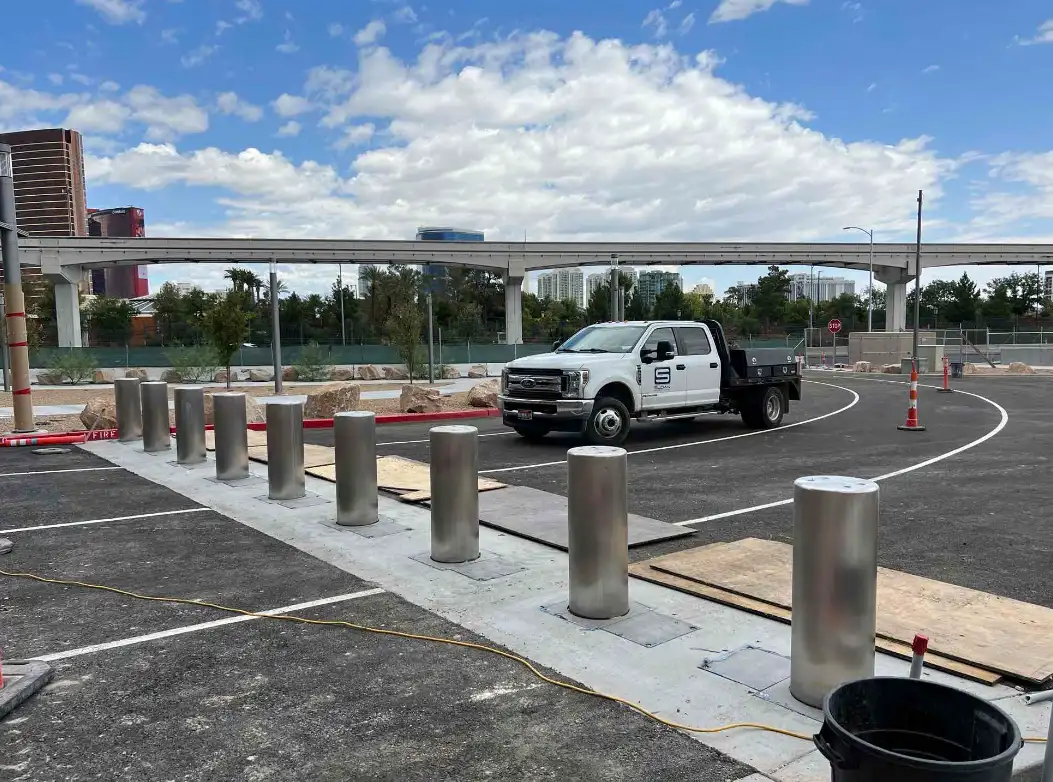Typical Bollard Spacing and Best Practices To Consider
Bollards protect buildings and pedestrian areas by signaling to vehicles that they cannot drive in a certain area. We at Delta Scientific design our bollards to be able to stop errant vehicles even when they travel at high speeds, up to 50 miles per hour. Bollard spacing is necessary to provide adequate protection from vehicles without impeding foot traffic.

3 Considerations for Bollard Spacing
If you place bollards too far apart, they won’t provide adequate protection against attacking or out-of-control vehicles. The drivers will be able to maneuver the vehicles right between the bollards. On the other hand, if you space your bollards too close together, they could get in the way of pedestrians and slow foot traffic.
As you decide how far to space your bollards, here are some important things to consider.
1. Purpose of the Bollards
Why are you installing the bollards in the first place? Do you want to prevent vehicles from striking a building? Or do you have a walkway and need to prevent vehicles from crashing into pedestrians?
The reason you are installing the bollards makes a difference in how far apart you space them. If your primary purpose is to protect a building, you should have approximately three to four feet of clear space between each bollard. However, if your objective is primarily to protect a pedestrian area, the space between the bollards should be approximately four to five feet.
2. Pedestrian Movement
There is a reason why bollard spacing is farther apart in pedestrian areas. You need to strike a balance between protecting the pedestrians in the walkway and not impeding their progress any more than necessary.
Operational issues for bollards in pedestrian areas include the following:
- Conflict: Any event, such as a collision or evasive action taken to avoid a collision, that disrupts foot traffic’s natural flow.
- Convenience: The ability of a pedestrian to travel from one point to another at a speed they prefer and take the route of their choosing.
- Comfort: The ability of pedestrians to move freely, maintaining an adequate amount of personal space.
- Route Capacity: The rate at which pedestrians can pass through a space safely over a specific period of time. Route capacity is calculated in people per minute per meter past a fixed point.
3. Distance From the Curb
While bollards prevent drivers from operating vehicles in unauthorized areas, you also do not want to interrupt the flow of legitimate vehicular traffic. Therefore, the spacing between the bollards and the curb is also important.
How much space you need between the bollard and the curb may vary based on the local laws in your community. For example, the state of New York requires at least 18 inches between each bollard and the curb.
Come to Us With Questions About Bollard Spacing
Delta Scientific has been selling physical security products and access control systems for 50 years. We can answer questions you have about bollard spacing as well as other concerns, such as crash ratings. Let us help you craft a security solution tailored to your specific needs.
Sources:
https://www.dot.ny.gov/portal/pls/portal/mexis_app.pa_ei_eb_admin_app.show_pdf?id=12877
https://codelibrary.amlegal.com/codes/mentor/latest/mentor_oh/0-0-0-36895
Share This Story, Choose Your Platform!
